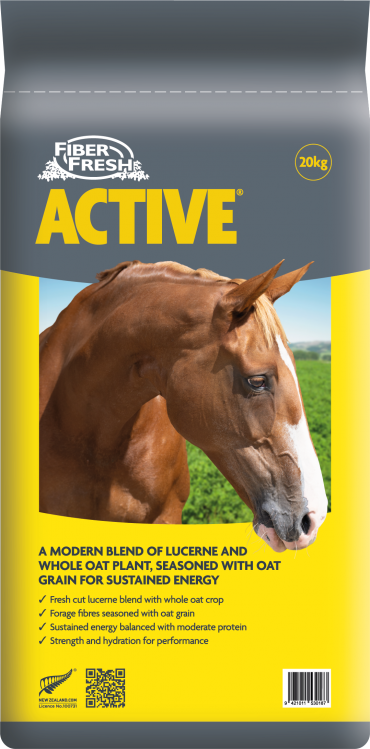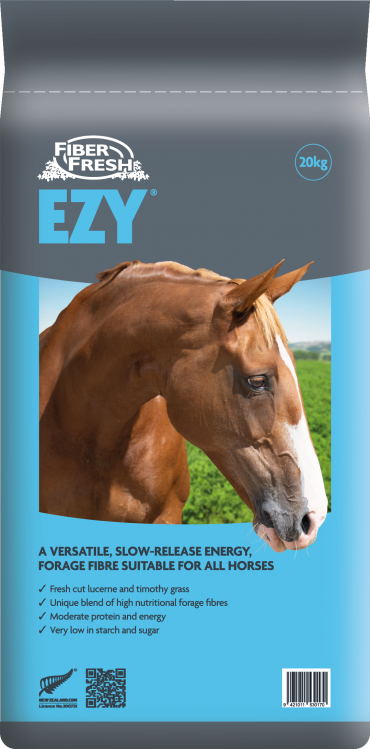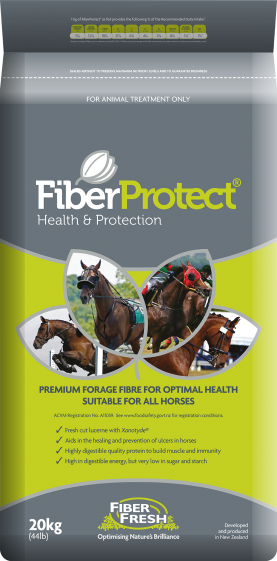
Fibre is a critical component in the diet of the horse, with the recommended daily minimum fibre consumption being at least 1.5% of body weight in dry matter fibre which primarily maintains a healthy gut and metabolic function.
In equine diets, starch and sugars (soluble carbohydrates), can come from a variety of sources. Generally grains contain the highest amount of starch and sugar, followed by the sugar levels in cool-season grasses. Cool-season grasses can have surprisingly high levels of fructans (grass sugars). Examples of cool-season grasses are ryegrass, timothy, brome grass, and orchard grass. Lucerne contains the least amount of starch and sugars of all the commonly-fed forages.
Most sugars and starches are rapidly digested in and absorbed from the small intestine, increasing blood glucose and triggering increased insulin secretion. However, if the sugar or starch content in the diet exceeds digestive capacity in the small intestine, overflow into the hindgut upsets the microflora balance, which then increases the acidity of the hindgut. Hindgut acidosis is a trigger for development of disorders like laminitis, colic and tying up.
Structural carbohydrates (or fibre) comprise the walls of plant cells and can only be slowly digested and utilised through the fermentation action of the microbial population in the equine hindgut. This produces volatile fatty acids, which are absorbed and used as slow-release energy by the horse.
Fructan (a grass sugar), is an exception, because although classified as a Non Structural Carbohydrate (NSC), they can only be digested by hindgut fermentation. However, because the fermentation of fructans is relatively rapid, the acidifying effect can be similar to excess undigested starch reaching the hindgut.
The key to feeding and managing horses with carbohydrate sensitivities, such as Laminitis, Cushing’s and metabolic conditions, is to avoid feeds that are high in soluble sugars and starch, whilst still providing the horse with the adequate energy that it requires, and ensuring sufficient daily fibre requirements. Carbohydrate-sensitive horses and ponies can benefit from including some Lucerne in their diet as a forage choice, rather than just resorting to the use of dried cool-season grasses.
Soaking of grass hays is often recommended to remove sugars and while it does remove some of the sugar it isn’t a reliable way of removing all the sugar and it removes many of the good nutrients in the hay too.
The Fibre Fresh solution would be to use a feed low in starch and soluble sugar such as FiberEzy® or Fiber Protect®. Both of these forage fibre sources are approximately 1.5% starch/sugars (as fed), for Fiber Protect®, and 4-5% (as fed), for Fiber Ezy®. For horses requiring a lower calorie source, Fiber Ezy® would be the best choice or those that are needing a more calorie dense feed for condition, Fiber Protect® would be the best choice.
Robyn Hirst BSc. M.AgriSci. Equine Studies.




